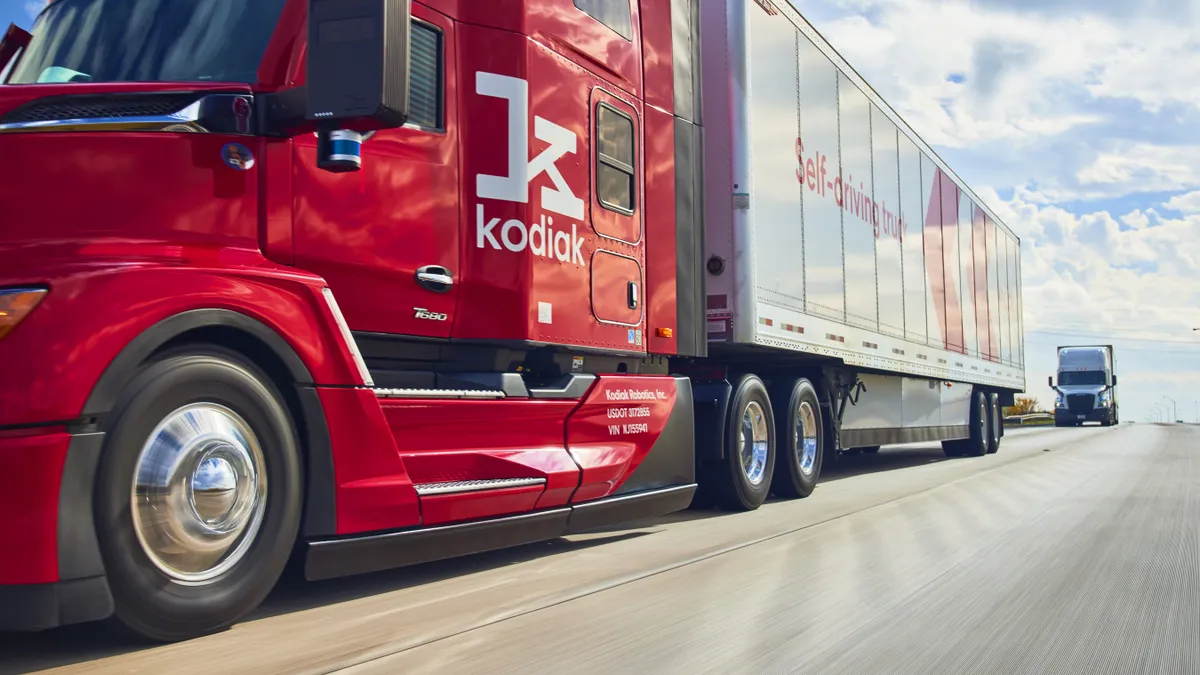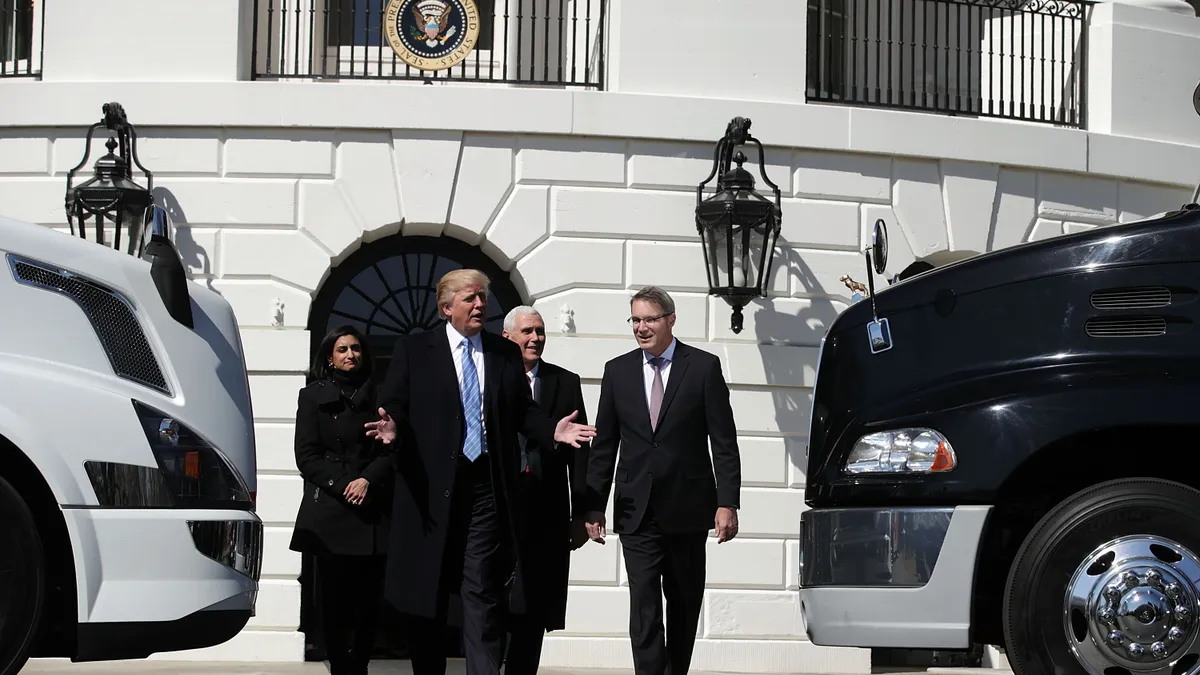Green technologies in the trucking industry bring many promises, including the potential for lower costs. From electric trucks to hydrogen fuel-cell trucks and hybrid engines, fleets stand to gain by investing in modern options.
But for long-haul trucking, fulfillment of those promises is still well in the future.
"You may want to put in an order for a long-haul electric truck, but you won't get one," said Mike Roeth, executive director of the North American Council for Freight Efficiency. "Many manufacturers are working on them, but they're not here yet."
That doesn't mean, however, that fleets shouldn't be considering the technology and how to make it cost effective. "Should you learn about it and study it? Yes. But the range of trucks and the infrastructure isn't there yet," Roeth said.
A big piece of learning about the technology is determining total cost of ownership, or TCO, to justify the expenditure. For this, there are many factors to take into consideration.
Calculating the costs
When determining TCO for an alternative-fuel vehicle, it should be in comparison to a diesel truck, according to Patrick Couch, senior vice president of technical services for consulting firm Gladstein, Neandross & Associates.
"The starting point for a fleet's assessment of TCO should be to develop an understanding of the operational impacts of the technology and what supporting infrastructure and resources are required," Couch said. "TCO is intended to capture all the costs of owning and operating a vehicle."
In the case of an alternative-fuel vehicle, those costs include the purchase of the vehicle, the infrastructure to support it, the fuel and the maintenance, among others.
Roeth said a good starting point in cost calculation is the duty cycle data. "How many miles is the truck driving? How much time does the truck have in dwell time to charge?" he asked. "Once you have the data, talk to the truck manufacturers to see if they have the trucks that match your needs."
"Once you have the data, talk to the truck manufacturers to see if they have the trucks that match your needs."

Mike Roeth
Executive Director of the North American Council for Freight Efficiency
Couch agreed and pointed out that, in the case of alternative-fuel vehicles, fueling and charging times may dictate many operational impacts and inform infrastructure costs.
"Weight can be a significant issue, as well," he added. "For a Class 8 truck running near maximum [gross vehicle weight], a truck that has a 10,000 pounds, incremental curb weight could mean displacing cargo capacity. For fleets that run light, there might be little to no impact related to incremental weight."
With most alternative-fuel vehicles, the fuel cost savings is where the case can be made to offset the higher purchase costs of the vehicle and infrastructure, said Couch. "Focusing on ways to minimize fuel/energy costs are then key to improving TCO," he said. "Oversizing charging infrastructure or fuel stations erodes potential fuel cost savings."
The cost of the infrastructure is another consideration. Charging stations are a necessary component, and Roeth said that it's too early in the game to know exactly what these costs might run.
"In some cases, truck manufacturers are helping with that, but not always," said Roeth. "It depends so much on what needs to be done at the site other than just the charging hardware. We just had a fleet tell us they needed to spend [$45,000] to even plug in a portable charger supplied to them for an upcoming trial of an electric tractor."
The intangibles
When calculating TCO, some considerations aren't so obvious. "You should include as many things as possible and monetize as much as you can," said Roeth.
One factor that plays into the TCO — but is tougher to calculate — is driver turnover. "In the case of alternative fuel vehicles, it can be an incentive to drivers," Roeth said. "If they like the vehicle, they're more likely to stick around, and that's money in the bank."
Take a look around at federal, state and local incentives for green technologies, as well, to lower TCO. "Some grant or incentive programs are straightforward, but others require assistance to navigate successfully," said Couch. "Some can reduce or eliminate the incremental purchase costs for vehicles and infrastructure."
"If [drivers] like the vehicle, they're more likely to stick around, and that's money in the bank."

Mike Roeth
Executive Director of the North American Council for Freight Efficiency
Don't overlook public sentiment, either. "There's a very real push for public facing companies to consider the environment," said Roeth. "From a financial standpoint, businesses must consider how sustainable they are."
Ultimately, this can help sell the idea to the C-suite.
"Historically, the best pitches have been based on cost savings, regulatory compliance requirements, or customer requirements—and those are still very compelling motivations for fleets to transition to alternative fuels," said Couch. "However, we are increasingly seeing fleets inspired by their peers and competitors to be leaders in sustainability. So, be prepared to demonstrate the economic value of the project to the company, but also provide a competitive context for executives to consider."
When he looks to the future and where the industry is headed, Roeth is encouraged. "There are billions of dollars being pumped into new technologies," he said. "It will greatly improve the industry's capability and competency."




















